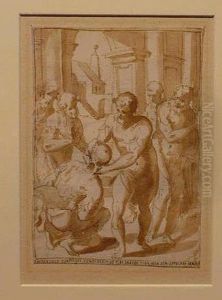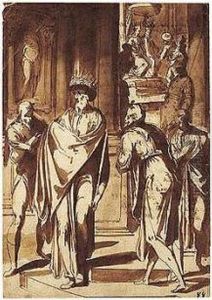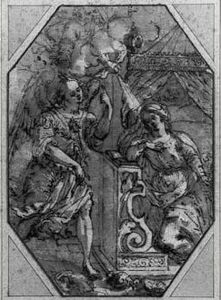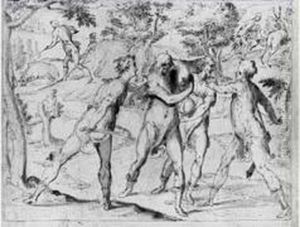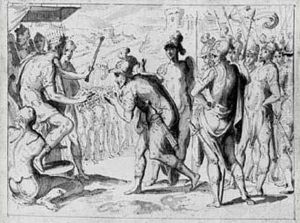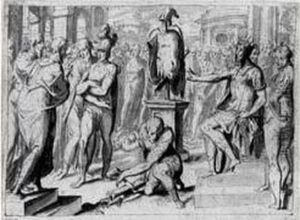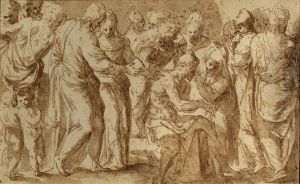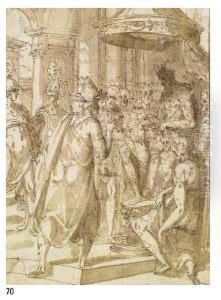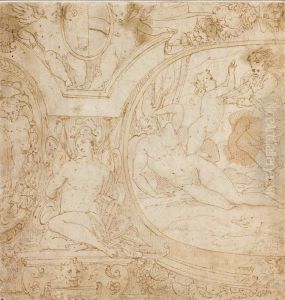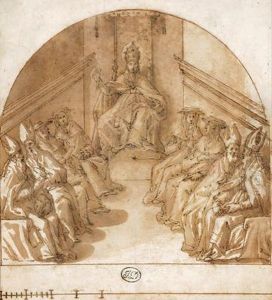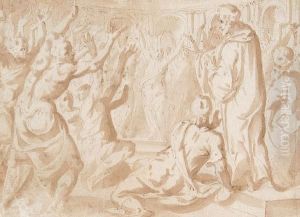Giovanni Guerra Paintings
Giovanni Guerra, born in Modena, Italy, in 1544, was an Italian draughtsman and painter, known for his contributions to the Mannerist style of painting. His early life is somewhat obscured by the lack of documentation, but it is known that he was active in the artistic circles of his time from a young age. Guerra's work was heavily influenced by the dominant styles of the late Renaissance, particularly by the work of artists such as Correggio and Parmigianino, whose styles were characterized by their sophisticated elegance and elongation of forms.
Guerra's career took a significant turn when he moved to Rome, which was then the vibrant center of the Renaissance art world. In Rome, he became associated with several important figures, including the architect and painter Federico Zuccari. This connection provided him with opportunities to work on various important projects, notably in the decoration of the Vatican and other Roman churches. His work in Rome helped to establish his reputation as a skilled draughtsman and painter, capable of executing complex compositions with a delicate sense of detail.
Despite his success, Giovanni Guerra's work is less well-known today compared to some of his contemporaries. However, his contributions to the Mannerist style are recognized among art historians. He was particularly adept at creating intricate drawings and designs, which were used as preparatory sketches for larger compositions. These drawings are celebrated for their creativity and precision, and they provide valuable insights into the artistic processes of the period.
Guerra also played a role in the dissemination of Mannerist aesthetics beyond Italy. Through his drawings and prints, his style influenced other European artists, contributing to the spread of the Mannerist movement across the continent. His influence is evident in the works of artists in regions where Mannerism took a distinctive form, such as in France and the Netherlands.
Giovanni Guerra passed away in 1618, leaving behind a legacy that, while not as prominent as some of his peers, is significant for its contribution to the evolution of Italian art during a pivotal period. Today, his works can be found in various museums and collections, where they continue to be studied and appreciated for their artistic merit and historical importance.
